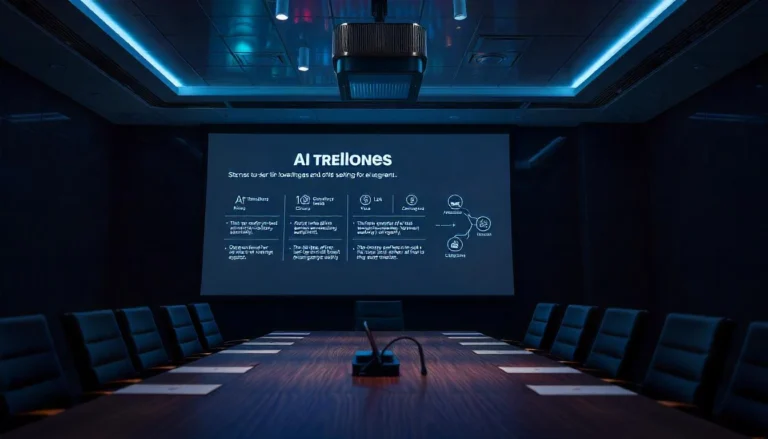Introduction
Artificial intelligence (AI) continues to evolve at an unprecedented pace, reshaping industries and redefining the way businesses operate. Over the next five years, AI is expected to make significant advancements across various sectors, including healthcare, finance, automation, and creative industries. This report provides a data-driven analysis of the most critical AI trends to watch, incorporating industry statistics, expert opinions, and real-world applications.
1. AI in Healthcare: Enhancing Diagnostics and Personalized Treatment
The healthcare industry is poised to experience significant AI-driven transformations, particularly in diagnostics, drug discovery, and personalized medicine. According to a report by Grand View Research, the global AI in healthcare market is projected to reach $208.2 billion by 2030, growing at a CAGR of 37.5% from 2023 to 2030.
Key Developments:
- AI-Powered Diagnostics: Machine learning models, such as Google’s DeepMind and IBM Watson, have demonstrated remarkable accuracy in diagnosing diseases like cancer and diabetic retinopathy.
- Personalized Medicine: AI-driven predictive analytics are enabling customized treatment plans based on genetic data, patient history, and real-time monitoring.
- Drug Discovery: AI accelerates drug development by analyzing vast datasets, reducing the time and cost of bringing new drugs to market.
2. AI in Finance: Automation and Risk Management
The finance sector has been a pioneer in AI adoption, leveraging algorithms for fraud detection, risk assessment, and automated trading. A study by PwC estimates that AI will contribute $1.2 trillion in added value to the financial sector by 2030.
Key Developments:
- Fraud Detection and Prevention: AI models analyze transaction patterns to detect fraudulent activities in real time.
- Robo-Advisors: AI-powered investment platforms, such as Betterment and Wealthfront, offer personalized financial planning with minimal human intervention.
- Algorithmic Trading: AI enhances market predictions, executing trades at optimal times to maximize returns.
3. AI and Automation: The Future of Work
Automation driven by AI is set to redefine industries, increasing efficiency while raising concerns about job displacement. According to McKinsey, AI-powered automation could displace 400 million jobs by 2030 but also create new roles requiring advanced digital skills.
Key Developments:
- Intelligent Process Automation (IPA): AI-powered robotic process automation (RPA) is streamlining repetitive tasks in industries like banking and manufacturing.
- AI in Manufacturing: Predictive maintenance and smart robotics are reducing downtime and increasing productivity.
- Human-AI Collaboration: Augmenting human decision-making with AI rather than replacing jobs entirely, leading to the rise of “cobots” (collaborative robots).
4. AI in Creative Industries: Redefining Content Creation
AI is making waves in creative industries, from generating realistic images to composing music. Tools like OpenAI’s DALL·E and ChatGPT have demonstrated the power of AI in content creation.
Key Developments:
- Generative AI: AI models can now create high-quality text, images, and videos, revolutionizing advertising and digital media.
- AI in Music and Art: AI-generated music platforms, such as AIVA, and AI-assisted design tools like Adobe Sensei, are transforming creative workflows.
- Deepfake Technology: While AI-generated media is advancing, ethical concerns regarding misinformation and copyright infringement persist.
5. Ethical AI and Regulation: Addressing Bias and Fairness
As AI systems become more prevalent, ethical concerns regarding bias, fairness, and privacy are gaining traction. Governments and organizations are prioritizing AI governance to ensure responsible deployment.
Key Developments:
- Bias Mitigation: Researchers are developing algorithms that reduce biases in AI models to ensure fairness in hiring, lending, and law enforcement.
- AI Regulations: The European Union’s AI Act and the U.S. National AI Initiative Act are examples of efforts to establish ethical guidelines.
- Transparency and Explainability: AI models must become more interpretable to build trust among users and stakeholders.
Conclusion
AI is set to transform multiple industries over the next five years, enhancing efficiency while posing new ethical and regulatory challenges. From revolutionizing healthcare and finance to automating workflows and redefining creative industries, AI’s impact will be profound. Businesses and policymakers must stay ahead of these trends to leverage AI’s potential responsibly and effectively.
By closely monitoring these advancements, organizations can prepare for the future, ensuring that AI adoption aligns with innovation, fairness, and long-term sustainability.

